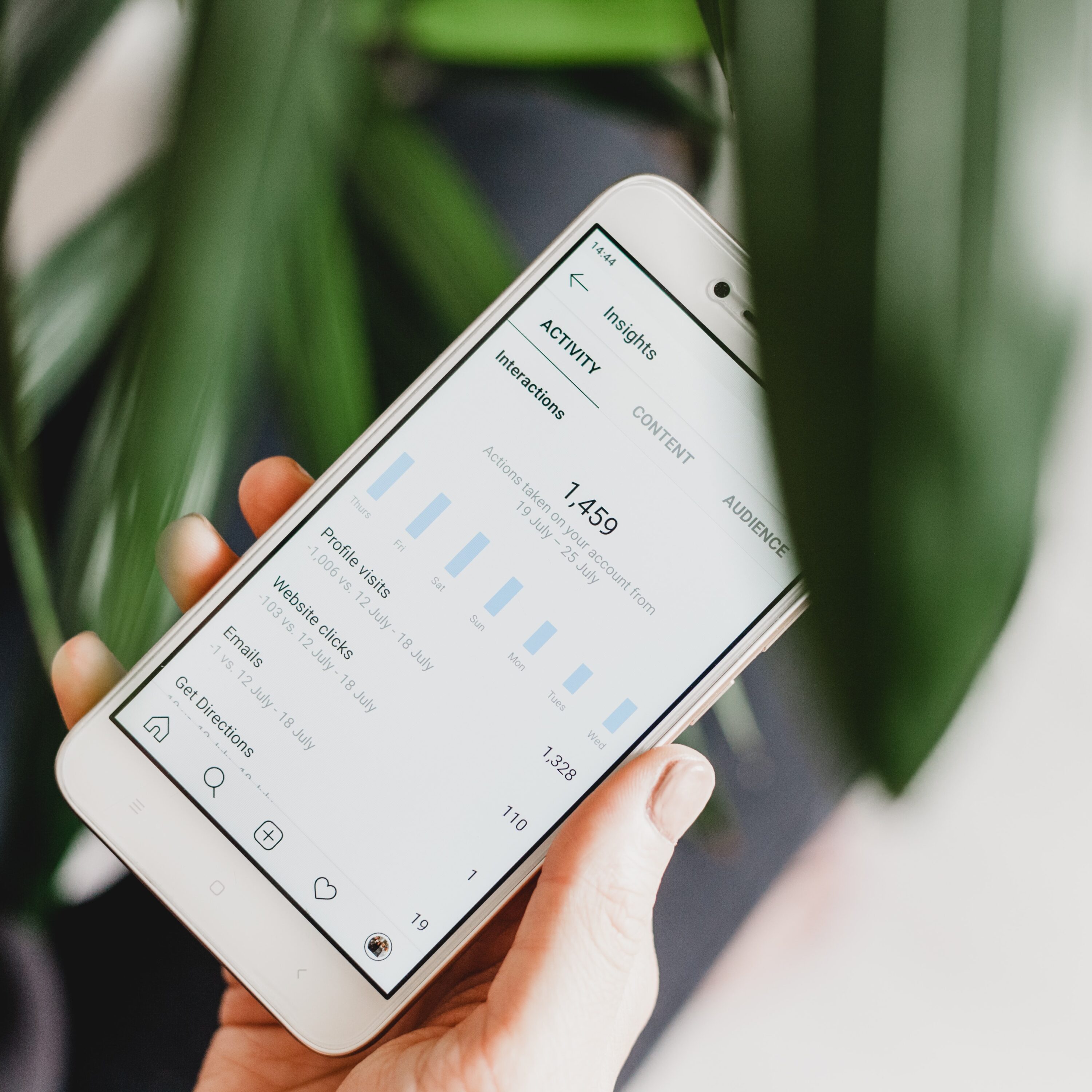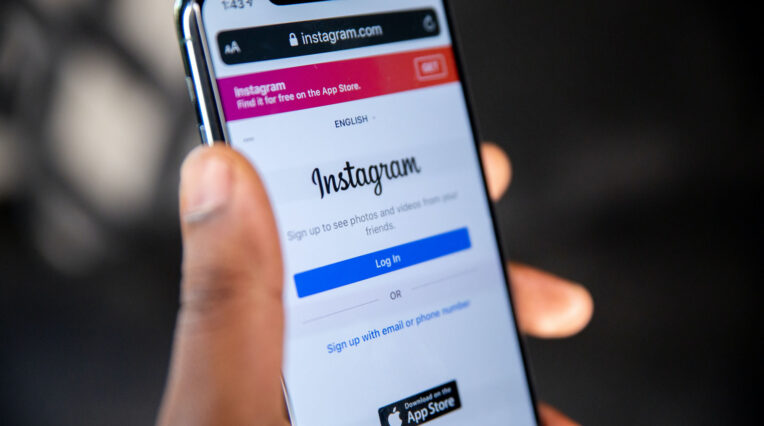25/07/2022
Social media marketing in UK healthcare

In this guide, we’ll cover:
- Social media marketing – Why should you embrace it?
- What can social media do for your business?
- Crafting a social media strategy
- Planning your social media content
Introduction
Social media: powerful marketing tool or nothing but fake news and GIFs?
It’s fair to say that healthcare businesses in the UK haven’t embraced social media in the way businesses in other sectors have. Those that have done have given it a cautious and formal approach.
Healthcare organisations are typically risk averse in how they operate. The industry is understandably heavily regulated, and boards and managing groups can be made up of a variety of stakeholders who might be disinclined to pursue more adventurous marketing strategies.
These factors can combine to result in a play-it-safe approach, with less appetite to venture beyond the more traditional marketing channels.
But where others see risk, we see an opportunity. Approached in the right way, there’s no reason why healthcare marketers can’t exploit this underused but extremely powerful channel to great effect. It can shape their brand, generate leads and be used as a force for good to challenge healthcare misinformation that currently exists across the internet.
In this guide, we’ll look at some of the reasons why marketers in the healthcare sector should consider social media as part of their marketing strategy and the how to go about approaching it.
Section 1: Social media marketing – why should you embrace it?
First and foremost, its popularity. There is a huge number of people using social media; according to Statista, over 39 million people in the UK, which is 58% of the population. By 2020 that figure is expected to have risen to 62%.
The variety of social media platforms available means that a broad spectrum of society is represented. It isn’t just millenials and younger generations using it; Facebook, for instance, has 15 million users in the UK over the age of 45. (Facebook 2019)
Stand out from the noise
As many healthcare brands haven’t yet embraced the social media revolution, those that do will find themselves at a competitive advantage straight away.
Brands in almost every other sector are clamouring for attention, and it can be challenging for marketing professionals to make themselves heard. But in a sector where there isn’t as much noise (yet), those that do it well will really stand out. That’s a situation that most marketers would dream of being in.
More and more people are getting healthcare advice through social media
As social media plays an increasingly important role in people’s lives, more and more are turning to it to get healthcare advice and support. There’s a responsibility for healthcare providers to occupy this space to ensure information that the public are consuming is accurate and properly researched. After all, social media is largely unregulated and anybody can publish anything.
People use social media for their healthcare information in a number of ways. Many use the internet to research symptoms and will come across social media content in the course of their research on channels such as YouTube, Facebook and Twitter.
Others will use social media to connect with people who can support or help them with their health, such as healthcare professionals or people suffering similar conditions to them. There are countless social media groups and communities concerning chronic conditions, where people discuss their experiences, treatments and symptoms and offer each other support and compassion.
Respond directly to feedback
People also use social media to hold businesses to account. Customers post reviews of businesses online and use platforms such as Twitter and Facebook to complain if they’re not happy or compliment if they’ve had a good experience. Businesses that aren’t present on these platforms won’t be able to respond to these posts and will miss an opportunity to remedy a complaint, give thanks for a compliment and show a bit of their brand’s personality.
Each of these online behaviours creates an opportunity for healthcare marketers to connect with their target audience and provide them with the kind of content and interaction that can create a relationship between consumer and brand.
Section 2: What can social media do for your business?
Using social media and interacting directly with customers and potential customers presents a unique opportunity to establish a tone of voice for your brand and build a personal relationship with your customers.
In a world where healthcare brands are known for playing it safe – think blue and green colourways and safe language — this means you can make your brand stand out as being more personable, friendly and approachable. Provided the content you publish is accurate and well researched, this tone needn’t detract from the authority and dependability that any brand in this space should convey.
Improve your SEO
An active social media presence can also provide a huge boost to your SEO, improving how well you rank on popular search engines. Google likes websites that receive a lot of traffic and engagement, giving them greater weight in the algorithms that decide how high up you appear on the results page for given search terms.
Publishing content on social media and linking it back to your website means that your site will receive higher traffic, potentially improving its performance in Google rankings. In a world where there are many businesses offering similar services and promoting themselves in similar ways, strategies such as this can make a big difference to your visibility.
Using social media gives you an opportunity to create and share lots of keyword-rich content that will get picked up by search engines for a broader range of search queries.
Connect with your customers on a personal level
Social media gives you the opportunity to connect with customers one-to-one, without the time commitment of replying directly to emails or making phone calls. Patients can be bombarded with information online that they’re unsure whether to trust, and the opportunity for a potential customer to speak directly with a care provider through a live chat or Q&A could be very valuable and help build a trusting relationship.
Target specific customer groups
One of the reasons social media has proved such an effective channel for marketers is the opportunity to tailor messages to specific groups of users. Profiles and usage statistics allow marketers to create customer segments based on age, location, gender, job type, likes and dislikes and a host of other factors.
Healthcare marketers can use this data to target content about conditions that primarily concern certain demographics. For example, an article on the early signs of prostate cancer could be promoted specifically to men over the age of 50.
Section 3: Crafting a social media strategy
Be strategic
As with any marketing channel, approach social media strategically if you want to get the most value out of it. Without strategic direction you’ll at best waste time and money and at worst risk your brand’s reputation.
Before you start, ask yourself the following questions:
- What business goals do you want to achieve?
- What marketing goals do you want to achieve, and how do they relate to your business goals?
- How can social media help you achieve these goals?
Once you have the answers to these questions, you’ll have the basis on which to build your strategy. Everything that you decide to do should resonate with your answers to these questions.
For example, your business goal could be: sign 100 male clients over the age of 50 to a healthcare plan this quarter. Your marketing goal might therefore be: drive 1,000 males over the age of 50 to your enquiries page on your website during that time. And your social media strategy would target males over the age of 50 with content that they’ll find so useful and authoritative that they’ll visit your website.
Know your audience
Your strategic planning should have given you an idea of who your target audience is. Now you need to make sure that you have solid insight into who they are. Knowing your audience inside out will allow you to craft an effective communications plan, which will include what platforms to post on, what type of content to post, when to post it and what topics to post about.
You should carry out some research into your audience to understand more about who they are and what their motivations are. Simple desk research can be effective if it’s a demographic that has been well researched before, but nothing beats field research for getting to the heart of who you’re talking to. That could take the form of telephone interviews or focus groups.
Here are some things to consider:
How does your target audience access social media? A working professional may use social media on his or her smartphone during a commute, whereas an older person might typically access it using a PC during the day. This matters because it can help you decide what type of content to post and on what channel. For example, the commuter using their smartphone isn’t likely to stream a data-heavy video that requires cinematic sound, so you may opt for shorter videos with subtitles.
What are their motivations? A busy parent is likely to have different motivations to a young single male. Likewise a busy professional will have different personal motivations to a retiree. What does your target audience worry about? What health issues are likely to dominate their minds? Knowing what makes your audience tick will help you craft messaging that will resonate with them.
Who influences them? Young people may be heavily influenced by parents, so if you’re trying to reach a younger audience, you may consider targeting parents. And elderly people may be heavily influenced by their grown-up children, so that would be a demographic worth considering if you specialise in elderly care.
What are their attitudes to healthcare, and what do they expect from a healthcare organisation? Some people may want an online symptom checker, others may look for a supportive community where they can share experiences of suffering from a chronic condition. Others may want lifestyle advice or tips on staying healthy. The point is, different groups will be looking for different things, and you need to know what it is that your target audience is looking for so that you can give it to them.
Section 4: Planning your social media content
For a social media plan to be effective, you need to post regular and consistent content. You won’t achieve any of the benefits discussed so far if you post lots for one week and then go quiet.
An excellent way to ensure consistent and regular content is to use a content calendar. This is a tool to help you map out each week’s posts and schedule when you are going to send them. As part of the calendar, you could assign a different theme to each week to keep your content fresh and ensure you’re not posting the same things constantly; just make sure everything remains relevant to your target audience and is aligned to your strategic objectives.
For example, if you decided to target sports people suffering injuries, your schedule could look like this:
Themes
Week one theme: Knee pain
Week two theme: Back pain
Week three theme: Shoulder pain
Content
Monday: Article on top preventative tips
Wednesday: Video demonstrating preventative exercises
Friday: Interview with a previous client discussing their treatment plan with you
Content suggestions
Depending on who your audience is, you could consider some of these types of content:
Live Q&A with a doctor on Twitter
You could advertise a Q&A with one of your team on a particular health topic.
Article providing top tips for preventing an injury, promoted across different channels
Articles can be easily shared and will get your brand in front of people searching for topics that you specialise in.
A Facebook group for sufferers of chronic conditions
People suffering from chronic conditions will value the opportunity to share experiences and advice with others in the same situation as themselves. You could provide advice to those in the group.
A video on a specific health condition published on YouTube
One of your team could present a video on living with a certain condition, such as diabetes or an irregular heartbeat. Viewers will build a sense of trust with you if they’re able to ‘meet’ your doctors via a video.
Recipes for healthy living, published across different channels
Perhaps a certain health condition requires a specific diet. You could post inventive recipe suggestions for sufferers, who may feel down about having to follow a restrictive diet and value your support.
Publish research findings across different channels
If you’re conducting research into healthcare, publishing it in a user-friendly format can help position you as the go-to experts in your field.
Patient case studies on YouTube
It’s a fact that consumers trust what other consumers say far more than what brands say. We can’t help being a little cynical when we hear a brand tell us how great they are, but a customer testimonial carries a lot more weight. Patient case study videos can really pack a punch and make great social media content.
Case study: Mayo Clinic
The Mayo Clinic is an American brand that has fully embraced social media and executed it exceptionally well. “Googling” common health conditions will frequently result in a top three listing for them because they’ve promoted a wealth of high quality content. It has certainly helped their brand recognition; many people in the UK have heard of the Mayo Clinic, despite them being based in Minnesota and only operating out of certain States in America.
They have been able to amass an enormous social media following:
- 9 million Twitter followers.
- Over 1 million Facebook followers.
- 140,000 YouTube subscribers with over 1 million views on some videos.
The Mayo Clinic publishes a huge amount of content, the majority of which is designed to educate and inform people about health issues. Their strategy focuses on empowering people to take control of their health. In doing so, they ensure that they are a trusted and respected brand, so that when the time comes to access healthcare services, people turn straight to them.
Not many organisations will have the resources to deploy social media as far reaching as the Mayo Clinic’s, but there’s still a lot we can learn from them. Let’s take a look at three examples of best practise that other businesses can take on board:
Be imaginative
If you can, try to go beyond publishing articles and blog posts. As effective as these are, it’s usually the first foray into content marketing that businesses try and as such may not stand out so well from the crowd. The Mayo Clinic use video extensively, as well as live Q&As. They really put themselves in their patients’ shoes and consider what it is they want. They answer patients’ questions in a format that’s easy to access and is trustworthy through informative videos and build trust and confidence with features on the clinic’s history and caring culture.
Their live Q&A sessions are filmed and viewers can post questions directly to the doctors presenting. They cover some really innovative topics, such as the use of robotic surgery in lung cancer treatment.
Consistency
The Mayo Clinic’s social media presence has a consistent tone and visual identity across all of its channels. When you’re accessing their content, you know it’s from them. This is vital in a sector such as healthcare; trust is a crucial factor in a patient choosing a care provider, and consistent branding is key to building trust.
Don’t underestimate its impact
Whilst social media might seem informal and a bit of fun, it’s impact on our lives is huge. Humans are social animals and so we trust information that comes through our social networks far more than anything else.
If a close friend shares something with us, we’re much more likely to pay attention to it than if a company shares it. So, if you can get people sharing your content through their personal networks, it becomes instantly more valuable and more impactful.
The Mayo Clinic clearly understand this, as they’ve put so much weight
behind their social media presence.
Conclusion
Approached with care and thought, social media has the potential to transform your healthcare marketing.
At present, social media is an underused marketing channel in healthcare, so the opportunity is there for innovative businesses to have a big impact. If you follow all of the advice in this white paper you should get some cracking results.
The healthcare sector is rapidly evolving, and marketing teams are fighting to keep pace with this change while dealing with a very specific set of challenges.
From KIMS Hospital, the largest private hospital in Kent, to the Cooden Medical Group, with outpatient clinics across Sussex, we’re helping healthcare providers bring the right information to the right people, in the right place, at the right time, so that patients and service users get the support they need





